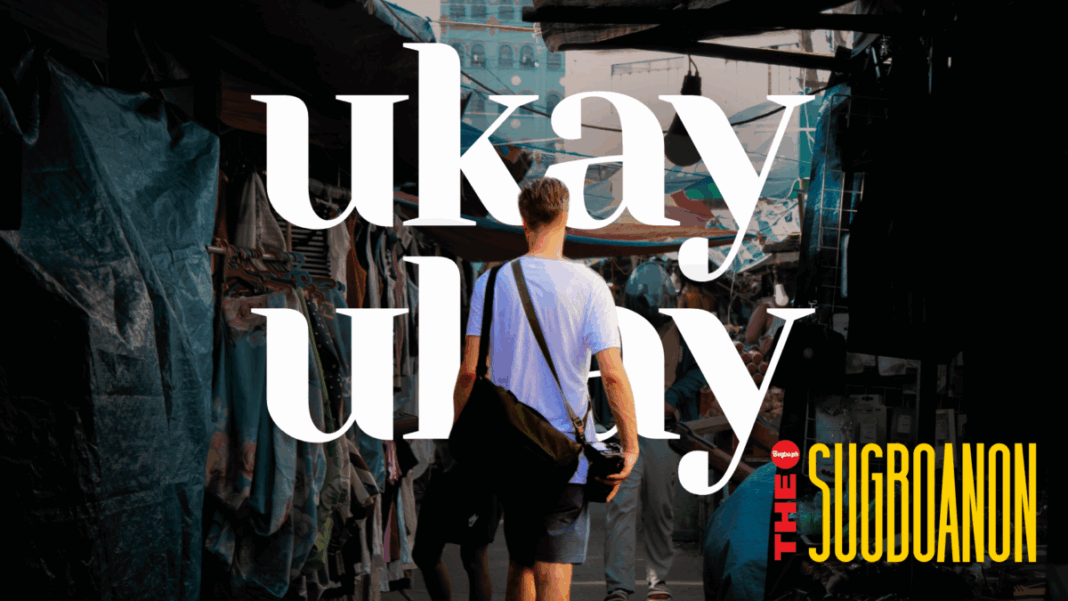Trends come and go, especially with getting great finds for an affordable price.

“Ukay-Ukay” refers to the second hand clothing stalls commonly found throughout the Philippines, though it is more than just a word that carries fabric and price tags. Derived from the Cebuano word “ukay”, which means “to dig” or “to sift through”, ukay-ukay culture is rooted in the hands on searching through mounds or racks of imported used clothes from countries like Japan, South Korea, Australia and the US. The prices catch passersby’s attention with how affordable it is. You get great deals and great clothes? Yes please!
Known Thrifting Places
Aside from the usual tourist spots, many come to Cebu for this reason. They also play a big role in contributing to Cebu’s economy, where places like Carbon night market, Colon street, Molave Street, and Atua Midtown are all famous places to quench your thirst for thrifting. But as they are known for great deals, pop up ukay-ukay has also been trending lately.
The Quiet Tension

As ukay- ukay cultures evolve, a growing number of shoppers have been going to the OG ukayan places and looking for great conditioned items which are resold through curated shops at slightly higher prices after cleaning and sorting. These types of stores are known to be the “Curated” versions of the OG ukay-ukays. You can actually find them on social media platforms like Facebook and Instagram and are often marketed through visually appealing posts and flat lays. Their appeal lies in offering a more streamlined and convenient browsing experience for fashion focused finds at accessible price points.

At the same time, original vendors where many of whom operate in warmer, open air environments, with limited road access continue to serve loyal customers while navigating challenges of their physical setup. While it is important to note that both contribute to Cebu’s thriving thrift economy, the difference in conditions and business models has drawn attention to the evolving landscape of local secondhand fashion. Thus a quiet tension between the two have been noticed, the original vendors who are often placed in hot areas with minimal access to proper roads have a direct competitor of hiked prices from their pile.
Voices of the Ukay Trenches
A sugboanon named “Miss Jen”, who is a frequent thrifter from Talamban happened to visit Molave street, prefers to go thrifting at ukay-ukay stalls with random bales, a stall even contacts her for new arrivals. Despite visiting the curated ones, she would still prefer to go back to the original ukay-ukay.
An ukay-ukay vendor in Colon, known as “Sir Cinco”, had not noticed a difference in terms of customers, because despite these pop ups attracting customers, those who prefer the OG often come back and are even sukis of his store.
Depending on their time and budget the best friendly pair “Sir Ace and Miss Karen” even shared that if they have the time, they would always come back to the, but if they have time constraints or would just like to browse items, they would go to these curated spots but those of deserving of the prices.
Miss Agnes, a vendor in Carbon Market who has been selling for over 20 years says that despite them being direct competitors, and even getting their supplies from them, a lot of people would always come back despite the difference of comfort. They would even support these curated versions of ukay-ukay if it is a means of livelihood because they have the same goal, to make a living, yet they are seen as such due to the locations.
One thing in common from the people I interviewed, was that they would prefer going back to the OG ukay-ukay shops if not for their location and road situation.
Development without INCLUSION is just DISPLACEMENT in disguise
Despite their vital role in Cebu City’s economy, ukay-ukay vendors in carbon continue to endure challenging conditions: facing the scorching heat, minimal road access, and limited public amenities. Meanwhile, pop ups thrift shops enjoy better access to proper roads, visibility and comfortable spaces. They too are trying to make a living and are part of the taxpayers of the city, are entrepreneurs, and hold cultural impact. Wouldn’t a proper location and actual road access be better for not just customers but for the vendors to make profit?
In a city driven by technological innovation and modernization, it’s sad to witness long-time contributors to Cebu’s cultural and economic identity fall behind. Cebu’s ukay-ukay vendors are more than just dealers; they are stylists, archivists, suppliers, and storyteller’s of fashion’s second life. Yet their spaces remain temporary, overlooked, and vulnerable to displacement. As curated thrift culture booms, the question grows louder: Why don’t the original ukay sellers have stable, dignified spaces of their own?

